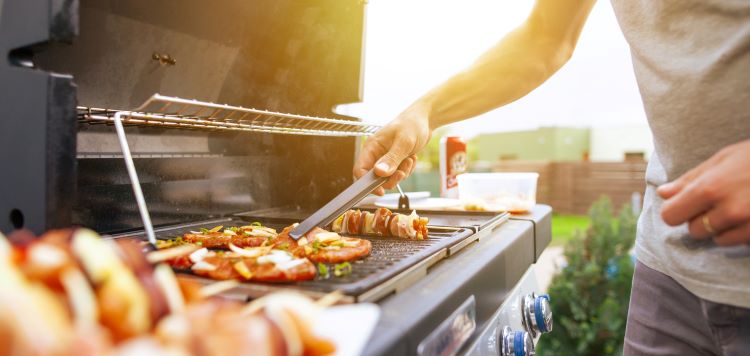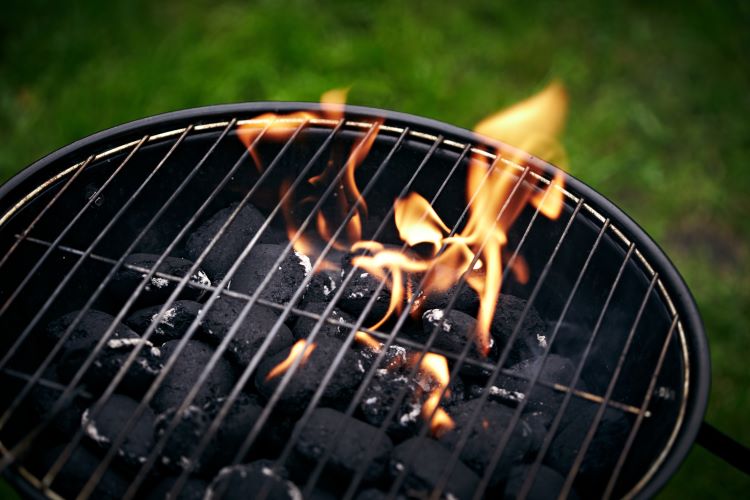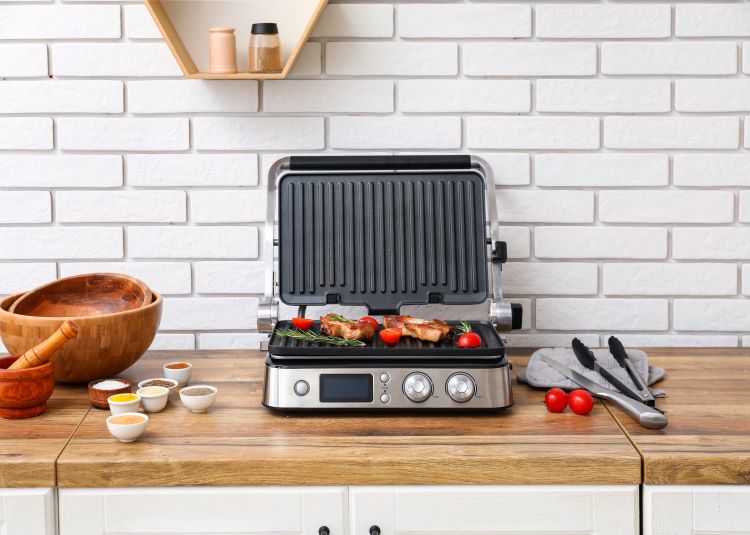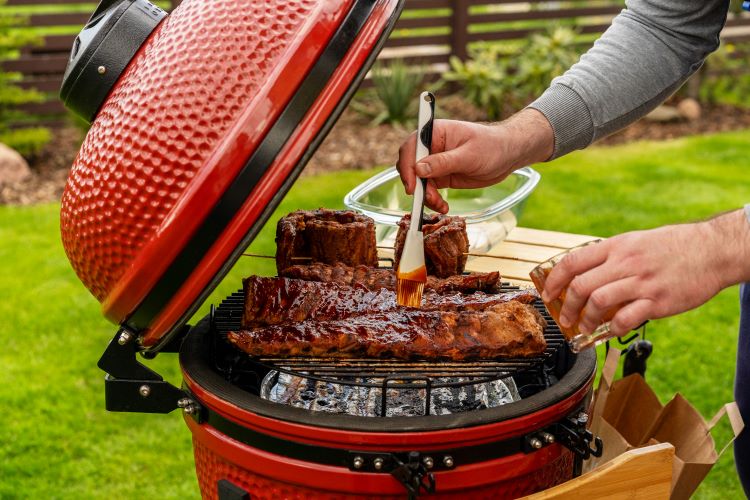 Whether it’s a backyard barbecue, a game day tailgate party, or a Hill Country camping trip, grills are usually at the center of any outdoor event in Texas. But which type of grill is the best? The answer: the one that fits your particular needs.
Whether it’s a backyard barbecue, a game day tailgate party, or a Hill Country camping trip, grills are usually at the center of any outdoor event in Texas. But which type of grill is the best? The answer: the one that fits your particular needs.
If you’re on the hunt for a new grill, think about what you want in a grill. Do you picture using it for a quick weeknight dinner or for large get-togethers with family and friends? Are you comfortable grilling, or new to the game? What kind of space do you have for a grill? These kinds of questions will help you determine which grill will best fit your space, lifestyle, and budget.
Here, Space Makers Junk Removal takes a look at the pros and cons of different types of grills—charcoal, gas, electric, and kamodo—to help you decide which is right for you.
CHARCOAL GRILLS

A classic charcoal grill is affordable, portable, and ideal when cooking for just the family or when you have friends over. Charcoal grills give your food that delicious, smoky flavor for burgers, steaks, chicken, and other meats. Achieving that smoky flavor means you’ll have to buy charcoal, lighter fluid (if the charcoal isn’t instant-lighting), or briquettes—all of which can add up over time and make the charcoal grill more expensive to operate than a gas grill, if you do a lot of grilling. These types of grills come in a barrel or a kettle shape. The barrel-shaped option provides for a thinner coal bed that’s perfect for burgers and dogs, but it requires more charcoal. Barrel grills run from around $95 to $600. The kettle-shaped grills provide for a deeper coal bed, but they don’t allow as much room for food, and the three-legged construction can be flimsy. Kettle grills run from about $100 to $350. Charcoal grills take about 20-30 minutes to heat up after you light them, and the temperature is harder to control as you grill. For example, meat that’s too close to the coals will burn quickly, so you will need to pay attention as you cook it.
WHAT TO LOOK FOR
- Sturdy construction, sturdy wheels (barrel-style grills are generally sturdier than three-legged ones)
- Adjustable-height grates
- Removable ashpan
- Hinged door or opening that allows you to add or rearrange coals
GAS GRILLS

A gas grill is convenient because you just push a button and the grill heats up quickly, usually within 10 minutes, and the temperatures are easy to control. Unlike charcoal grills, there are no coals or ashes to deal with, but you will have to deal with refilling a propane tank. However, gas grills can be more expensive and less portable than charcoal grills. They require a gas line or a propane tank, and they are not ideal for small spaces because they require a lot of room around them for safety. Some gas grills also come with features like a top rack for keeping food warm and a side table you can set your grilling accessories on, as well as rotisserie racks and wi-fi connectivity. Gas grills range in price from about $80—$100 for a smaller grill to over $3,000 for a large grill with all the bells and whistles.
WHAT TO LOOK FOR
- Stainless steel, not painted steel
- Seamless construction and welded joints (not assembled with nuts and bolts)
- Stainless steel or cast-iron grates
- Wheels on a full axle instead of bolted to the frame
- Lid handles not too close to lid (hot!)
- Warranties on the parts: burners, grates, firebox, igniters
- Extra features: fold-down shelves, storage space, warming rack, rotisserie racks, wi-fi connectivity
ELECTRIC GRILLS

Electric grills are ideal for small spaces like balconies and for indoor use, if you buy a smokeless one. They also come in lightweight, portable sizes perfect for tailgating or camping. They’re easy to use because all you do is plug them in, but it’s harder to sear foods because they don’t get as hot as gas or charcoal grills. There’s no ashy mess to clean up, and you don't have propane tanks to refill. As for price, electric grills can range from inexpensive ($50) to expensive ($1,500).
WHAT TO LOOK FOR
- Removable grates for easy cleaning
- Removable drip tray for easy cleaning
- Removable lid for easy cleaning
- Storability (can it fit in your cabinet or car?)
- Lid with a stop, so it doesn’t fall back when open
- Size and weight suitable for your kitchen space
KAMODO GRILLS

Kamado grills are thick, insulated ceramic or multi-layered metal grills with a distinct egg shape (think Big Green Egg or Kamado Joe brands). They’re named after a traditional Japanese method of cooking food inside lidded clay pots over charcoal or wood-burning fires. With the lid closed they work like a wood-fired oven, surrounding food with heat—great for smoking and roasting. They can reach up to 1000 degrees, higher than most grills, but that makes them good at searing meat or even cooking a pizza or bread. These types of grills are expensive. The ceramic ones start at around $800, although the lighter, multi-metal versions start around $350. Some kamado grills can run well over $1000. These grills require a lot of charcoal, but it’s best not to use lighter fluid or the easy-light charcoal because these can taint the taste of your food. Heat is controlled using a vent system, rather than knobs, and there is a learning curve to mastering the vents, but reviewers report that, once mastered, kamado grills are worth the money for the serious cook.
WHAT TO LOOK LOOK FOR
- Shape—the oval ones have space for two-zone cooking, while the round ones require a deflector plate (often not included)
- Materials—ceramic holds heat better than metal and won’t rust in humidity or rain, but it can chip or crack
- Adjustable grates to accommodate more items
- Split grill grates for both direct and indirect heat
- Slide-out ash drawers for easy ash removal
- Sturdy cart with locking wheels
- Built-in thermostat
- Side shelves (often not included)
- Warming racks (often not included)
- Portability—some models are lighter and more portable than others. Look for sturdy handles and legs
DON’T FORGET THE ACCESSORIES!
If this is your first grill purchase, be sure to grab the basic accessories that you’ll need for safe and effective grilling:
- Meat thermometer
- Grilling gloves
- Long-handled spatula, tongs, and fork
- A brush for cleaning the grill

